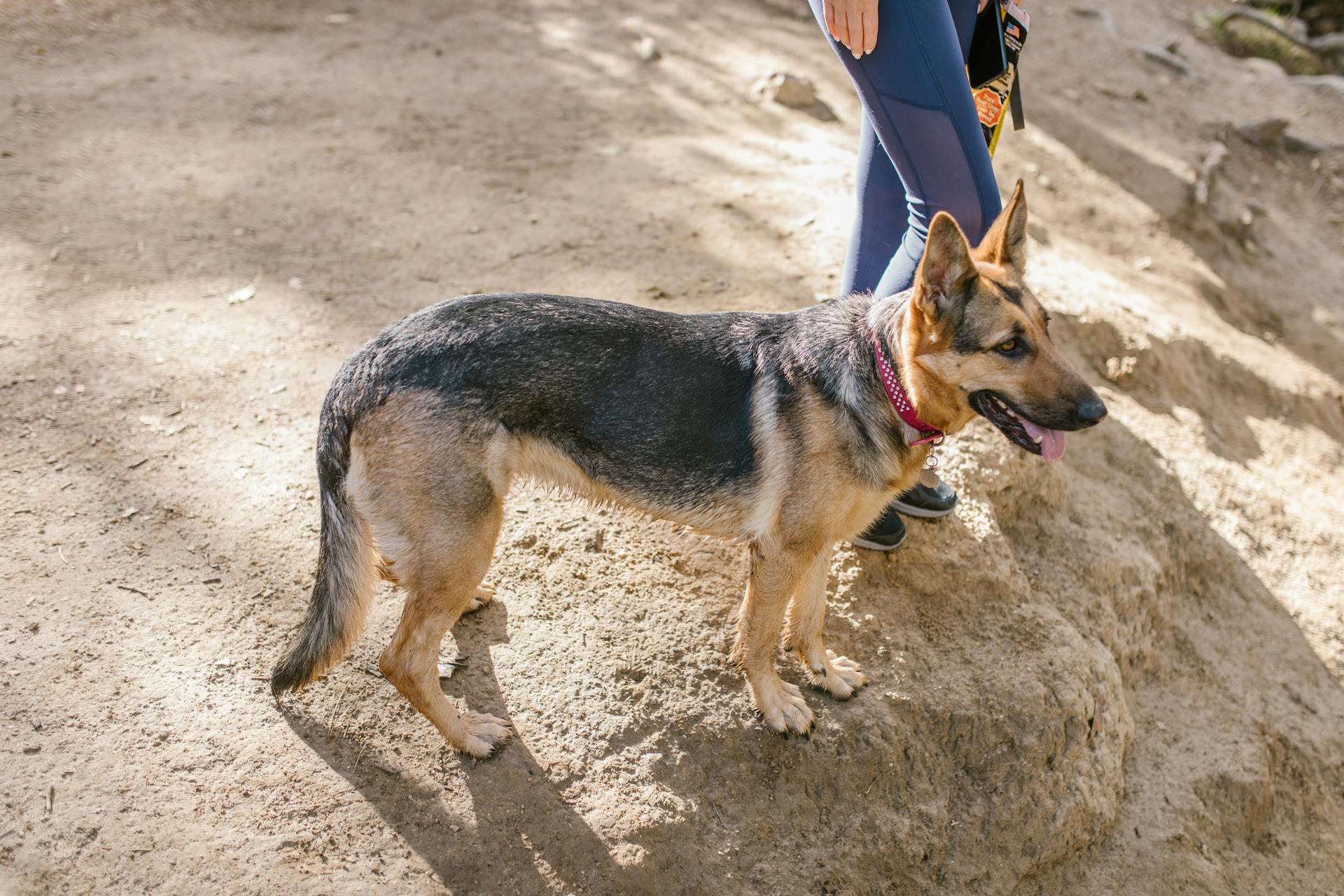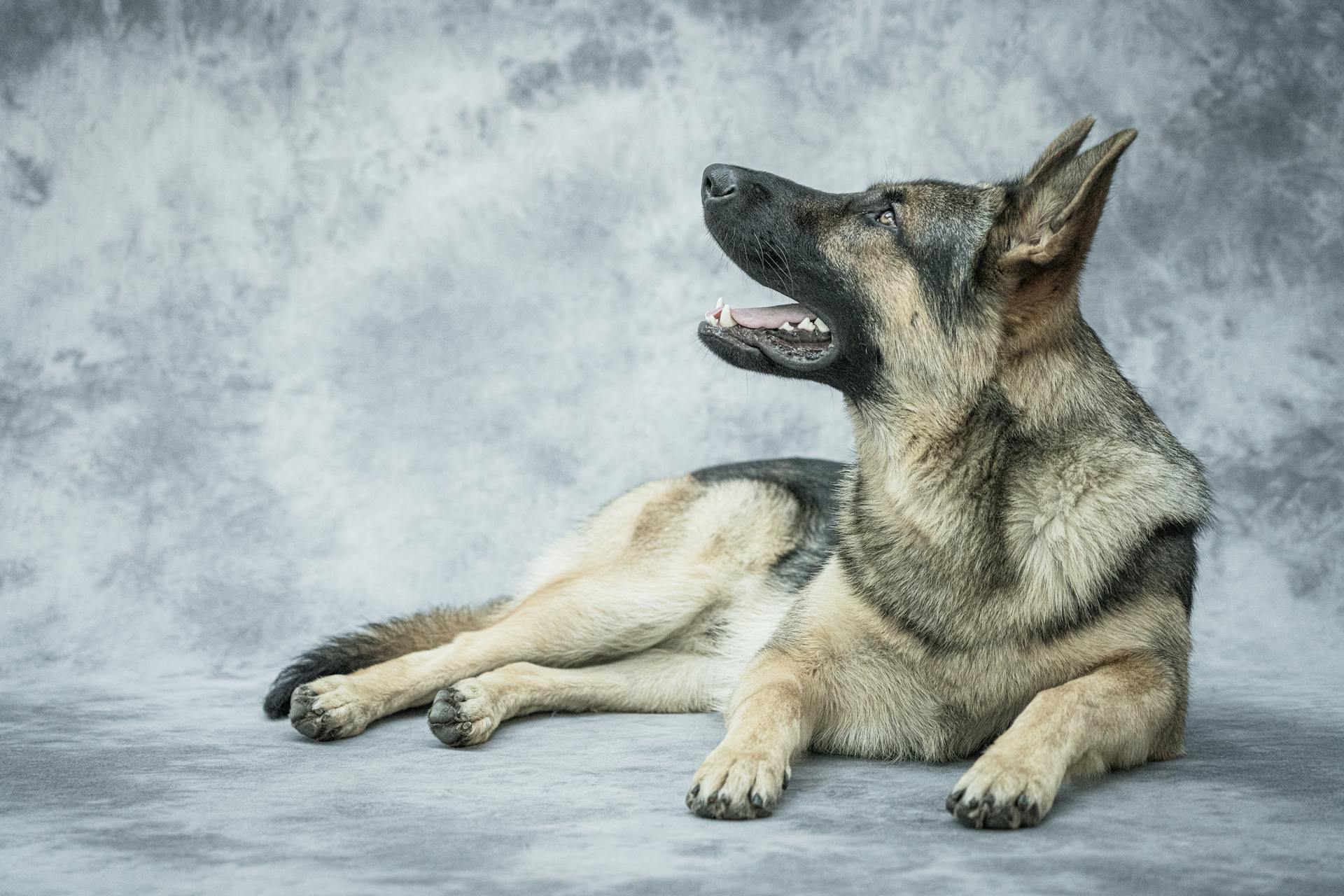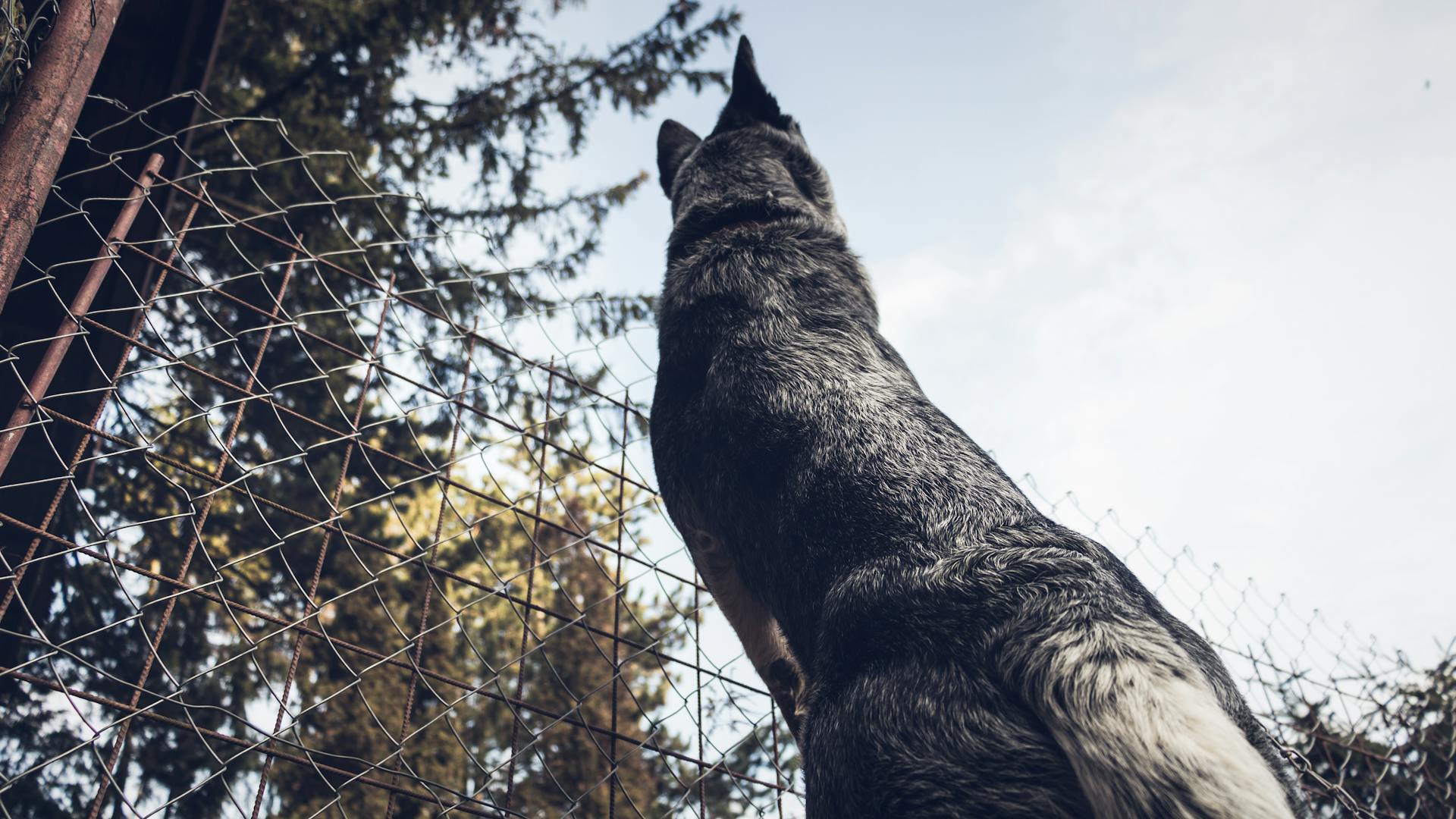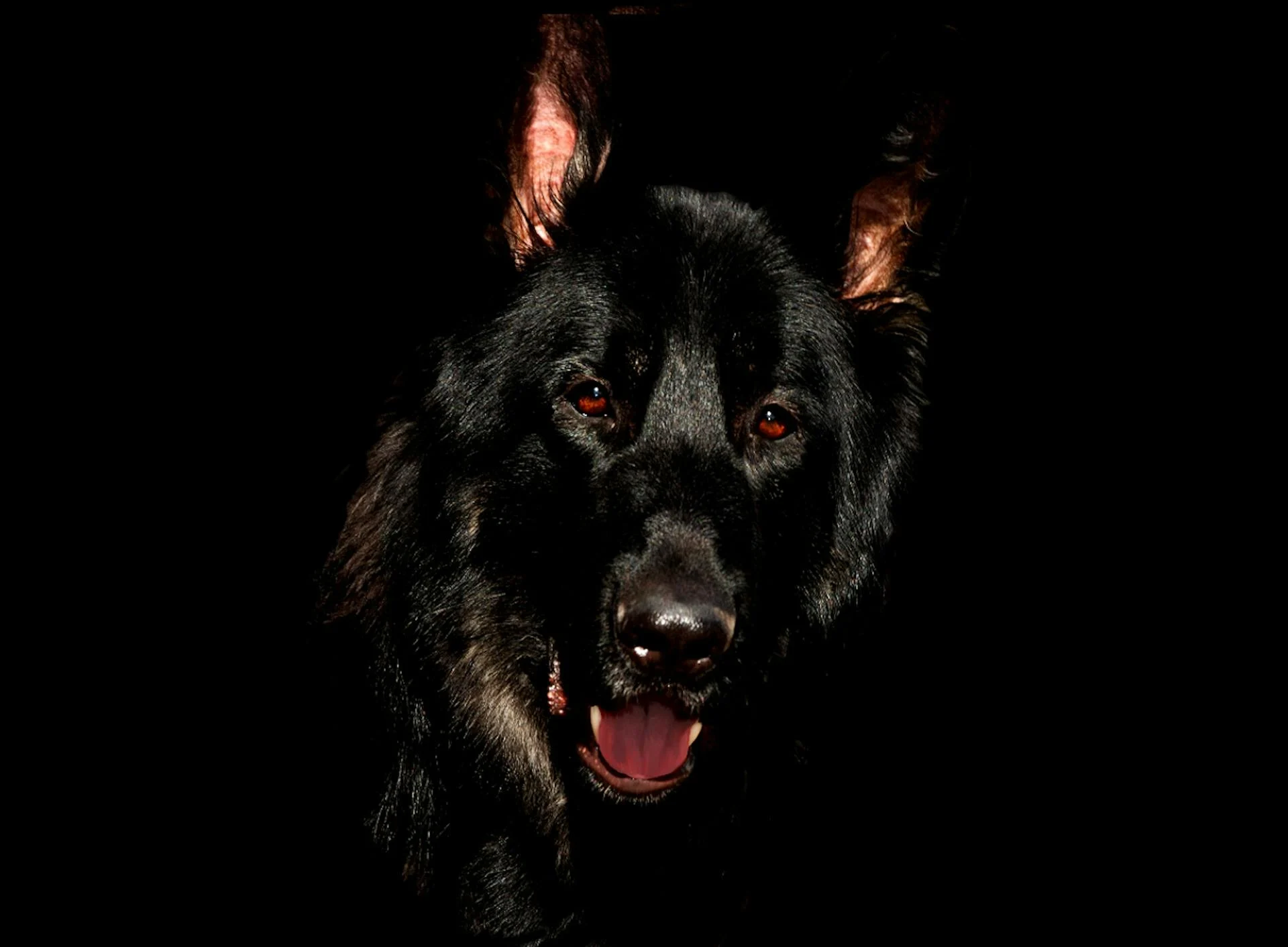
The German Pinscher Mix is a unique and fascinating breed. They are a cross between a German Pinscher and another breed, resulting in a dog with a distinctive appearance and temperament.
One of the most notable characteristics of the German Pinscher Mix is their high energy level. They require regular exercise to stay happy and healthy, with a minimum of 30 minutes of physical activity per day.
Their intelligence and trainability make them a great choice for active owners who enjoy training and engaging with their dogs. German Pinscher Mixes are known to be quick learners and thrive on mental stimulation.
In terms of size, German Pinscher Mixes can vary depending on the size of the parent breeds, but they typically range from 15 to 25 pounds and stand between 10 and 18 inches tall at the shoulder.
Discover more: Malamute Mixes
Temperament and Behavior
German Pinscher mixes are known to be intelligent dogs who can learn quickly, making training a bit challenging at times due to their independent nature.
They require regular exercise, such as running around in the yard or playing fetch, to keep them happy and healthy. Daily exercise is a must for this breed.
German Pinschers are loyal companions and love their family, forming strong bonds with their owners. However, they may occasionally bond more strongly with one family member.
They don't bark often, so when they do, it's usually for a reason. This means you should pay attention to their barking and investigate the cause.
As German Pinscher mixes may not tolerate other dogs well, they're best suited as the only pet in a household. Socialization from an early age can help prevent aggression towards other dogs.
To prevent destructive behavior, such as chewing or digging, when left alone, German Pinscher mixes need something to occupy their mind. This could be a puzzle toy or a long-lasting chew treat.
Here are some key traits to consider when living with a German Pinscher mix:
German Pinscher mixes are watchful and alert dogs, making them great watchdogs. However, this vigilance can also make them reactive towards perceived threats.
Care and Maintenance
The German Pinscher mix is a relatively low-maintenance breed when it comes to grooming. Their short, sleek coats are easy to manage.
You can use a soft-bristled brush a few times a week to help remove any loose hair. This will keep their coat looking healthy and shiny.
Trimming their nails monthly is also essential to prevent overgrowth, which can cause pain and walking problems.
Care
To keep your German Pinscher happy and healthy, regular exercise is a must. They need at least 1-2 hours of physical activity per day, which can be broken up into shorter sessions throughout the day.
You can take them for an early morning walk, followed by some playtime in a dog park or a game of fetch. This will keep them entertained and exercised.
Their short, dense coat requires minimal grooming, but it's still important to brush them weekly and bathe them occasionally.
Trimming their nails monthly will prevent overgrowth and potential pain or mobility issues.
Training
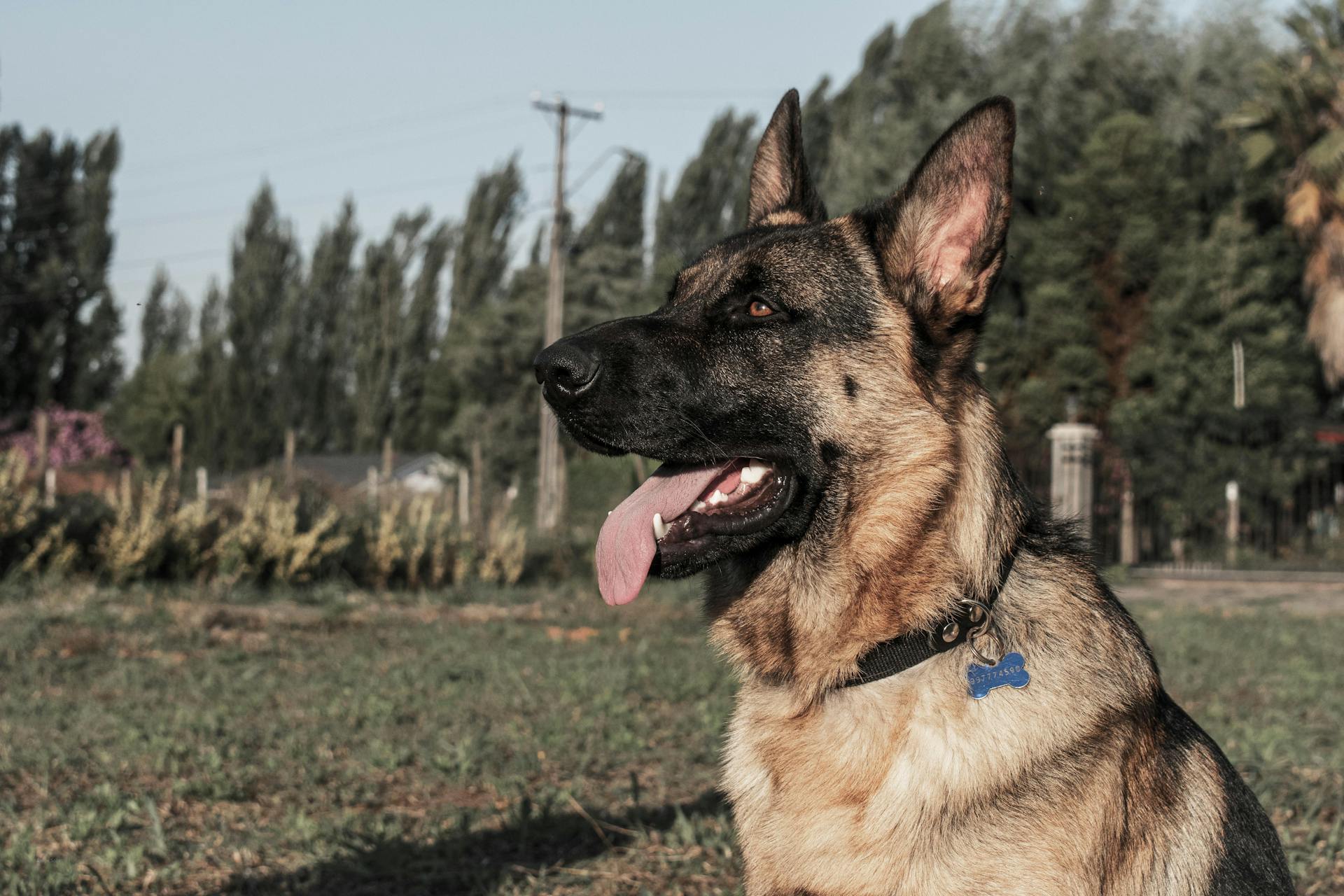
German Pinschers can be trained using a consistent training approach. This means setting a routine and sticking to it, as they can get bored if sessions are too long or inconsistent.
To overcome their stubborn streak, use reward-based training methods, and don't forget the treats and toys! German Pinschers thrive on positive reinforcement.
As a highly intelligent breed, they often excel at agility, obedience, and rally training. With the right approach, you can bring out their full potential.
Mixing up your training approach is key to keeping them engaged. German Pinschers can become bored with monotonous obedience training, so be sure to incorporate various activities to keep them on their toes.
Body Structure
German Pinschers are relatively small to medium-sized dogs, typically ranging in height from 17-20 inches (43-51 cm) and weighing between 25-45 pounds (11-20 kg).
Their head shape is quite distinctive, appearing elongated and powerful with a not-too-pronounced occiput. The head should resemble a blunt wedge from both the front and the side.
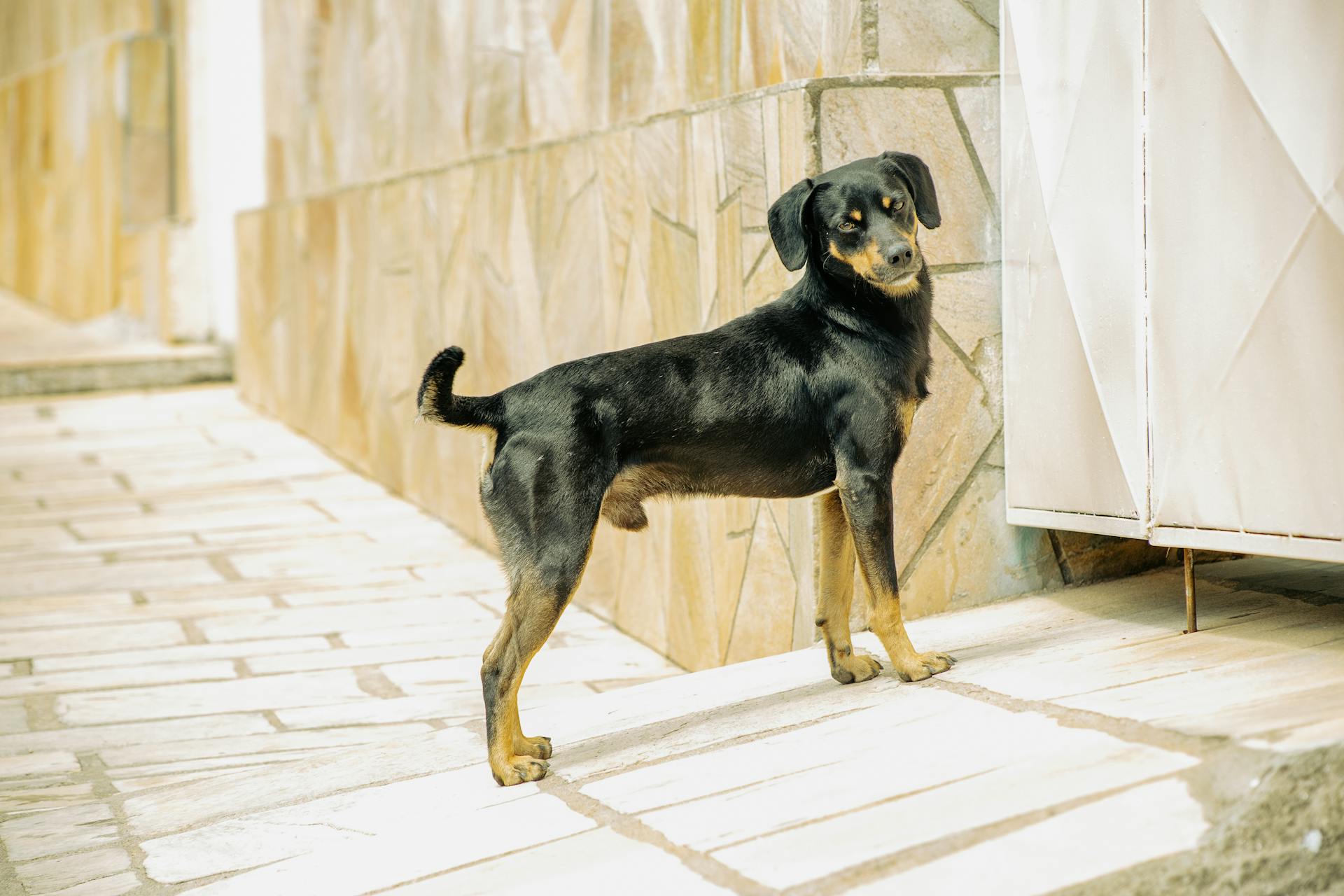
Symmetrical ears are a must, and they can be either cropped or uncropped. If cropped, they should be carried erect, while uncropped ears can be small, carried upright, or have a folding pleat and be V-shaped.
Dark, oval-shaped eyes are a German Pinscher's signature feature, and they should not have a bulging appearance. This is a key aspect of their overall appearance.
Their tail is usually docked between the second and third joints, carried above the horizontal, and moderately set.
A German Pinscher's overall appearance should be elegant, with a moderate body structure and a strong, square build. They should have a powerful, well-balanced gait with a ground-covering, relaxed trot.
Here are some key body structure characteristics to look out for:
- Height: 17-20 inches (43-51 cm)
- Weight: 25-45 pounds (11-20 kg)
- Head shape: Elongated and powerful with a blunt wedge appearance
- Ears: Symmetrical, cropped or uncropped
- Eyes: Dark, oval-shaped, and not bulging
- Tail: Docked between the second and third joints, carried above the horizontal
Health and Wellness
The German Pinscher mix is a relatively healthy breed, but like all breeds, they can be prone to certain health issues.
Eye conditions such as cataracts and corneal dystrophy can affect German Pinschers, so regular eye check-ups with your veterinarian are a must.
Hip dysplasia is another potential issue, which can lead to arthritis and mobility problems if left untreated.
Von Willebrand disease (vWD) is a blood clotting disorder that can cause mild bleeding tendencies in German Pinschers, although some dogs may experience more severe symptoms.
Thyroid disease is also possible, which can affect your dog's metabolism and overall health.
Here are some genetic health conditions that can affect German Pinschers:
- Glycogen Storage Disease Type Ia (GSD Ia) is a severe metabolic disorder that can cause critically low blood sugar levels and liver enlargement.
- Von Willebrand's Disease (vWD) Type 1 is a blood clotting disorder that typically causes mild bleeding tendencies.
Frequently Asked Questions
Are German Pinschers good dogs?
German Pinschers can make great companions for active owners who provide regular exercise and training, but they can be challenging for inexperienced pet owners. With proper care, they're a loving and loyal breed.
How big is a German Pinscher?
German Pinschers typically stand between 17-20 inches tall and weigh 25-45 pounds. They are smaller than Doberman Pinschers, which can reach up to 100 pounds.
Do German Pinschers shed?
German Pinschers are considered an average shedding breed, requiring regular grooming. They need weekly brushing to manage their shedding.
What is the personality of a Doberman lab mix?
The Doberdor is known for its courageous, protective, and loyal personality, making it a great companion for families. With a strong and sleek appearance, this hybrid breed is a unique and loving addition to any household.
Do German Pinschers bark a lot?
German Pinschers are prone to excessive barking due to their keen watchdog instincts, which can become a nuisance if not properly trained. If you're considering a German Pinscher, be prepared to invest time in training to minimize unwanted barking.
Featured Images: pexels.com
